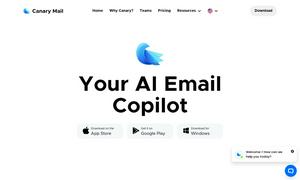Dot

About Dot
Dot empowers data teams and business stakeholders to interact seamlessly with their data warehouse using natural language queries. This innovative AI assistant provides fast, accurate insights, allowing users to make informed business decisions without waiting days for traditional analytics. True analytics self-service is at your fingertips.
Dot offers flexible pricing plans tailored to various user needs. With a free tier allowing basic usage, users can opt for premium subscriptions for advanced features and integrations. Upgrading grants access to faster insights and enhanced support, making data analysis more effective and user-friendly.
Dot’s user interface is designed for simplicity and efficiency, ensuring users can easily navigate and access insights. The layout prioritizes a seamless browsing experience, featuring intuitive menus and quick access to essential tools, allowing users to maximize their productivity with minimal effort.
How Dot works
Users onboard Dot by connecting their data sources, enabling immediate access to analytics through a simple chat interface. After setup, users can ask natural language questions, and Dot responds with precise insights, revolutionizing the way data teams access information. The platform’s ease of use makes analytics accessible to everyone.
Key Features for Dot
Natural Language Queries
Dot’s standout feature is its ability to understand and respond to natural language queries. This unique functionality allows users to gain insights instantly without needing deep technical expertise, making data analysis far more accessible and efficient for all team members.
Automated Ad-hoc Requests
Dot automates ad-hoc data requests, allowing teams to focus on high-impact analytics tasks rather than routine questions. This automation enhances productivity and streamlines data processes, ensuring that users receive reliable insights without overwhelming their data teams.
Instant Insights in Chat
Dot provides instant insights directly within chat applications like Slack and Teams. This integration ensures that users can ask questions and receive answers without leaving their workflow, significantly enhancing productivity and simplifying data access in collaborative environments.
You may also like:








